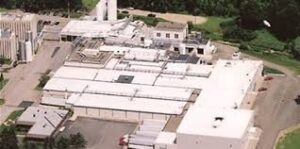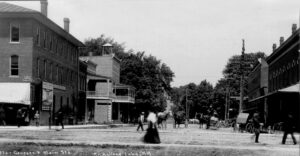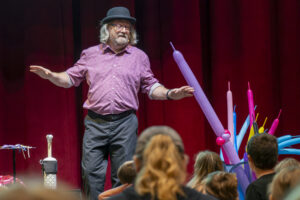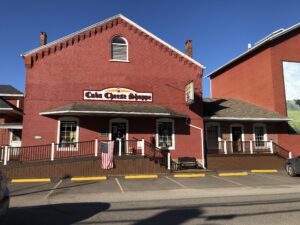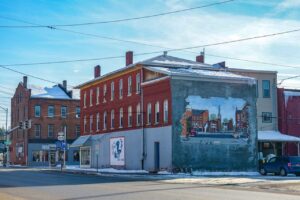A Historic Look at Cuba, New York: From Oil Springs to Mercantile Rivalry
Cuba, a small yet historically rich town in Allegany County, holds a notable place in the annals of Western New York history. Within its boundaries lies the famed Seneca Oil Spring, first documented in 1627 by French missionary Father Joseph de la Roche D’Allion. Three centuries later, in 1927, the New York State Oil Producers commemorated this natural wonder by placing a memorial boulder at the site, preserving its historical significance for future generations.
In the late 18th century, the Holland Land Company “articled” parcels of land to eight men, though no substantial development occurred until the early 19th century. Around 1808, Colonel Samuel H. Morgan and others began settling the area. Morgan constructed an inn at the corner of what are now Abbotts Road and West Shore Road, near present-day Cuba Lake. Another source, however, credits Solomon Abbott with establishing the first settlement in 1812. Abbott is said to have cleared land and built a house now owned by the Whitford family on the lake’s north shore.
By 1816, General Calvin Tibbetts Chamberlain had settled two miles east of the present village and erected a sawmill the following year. That same year, James Strong purchased much of the land currently encompassing the village. In 1820, Judge John Griffin acquired Strong’s holdings, positioning himself as a key figure in the community’s early land development.
Initially, most settlers concentrated on higher ground in the northern part of the area, which became known as Cadytown, later referred to as North Cuba. This locale emerged as a commercial hub with its own gristmill and sawmill.
Transportation and accessibility played pivotal roles in the area’s development. The “Bath Pike,” a turnpike between Bath and Olean completed in 1822, ran through what are now East and West Main Streets. However, traversing the region was difficult, especially during rainy seasons. It often took three teams of horses to move an 800-pound load through the swampy terrain, making a round trip to Olean—a journey of just over thirty miles—take up to four days. Many westward-bound travelers would sell their horses in Cuba and construct rafts to continue their trek down the Allegheny River toward the uncharted western territories.
The hamlet experienced notable growth in the early 1830s when Steven Smith purchased land from John Griffin, and Chamberlain opened a public house along with a store. This period marked the beginning of a spirited rivalry between Smith and Chamberlain, as both men sought to establish commercial dominance. Smith controlled most of the property on the north side of Main Street, while Chamberlain held the south. Their competitive development efforts inadvertently hindered town planning; roads from the north and south were not initially connected. It was years later before South Street (now NY Route 305) was realigned to meet Genesee Street.
Steven Smith proved to be one of the most industrious figures of his time in Cuba’s early development. His ventures included an ashery, a retail store, a joiner’s shop, a brickyard, and a lime kiln. Smith also built a notable four-storefront, three-story brick block still standing on Genesee Street, another on East Main Street, and two brick homes that now house The Inn at 28 and the Genesee Pizzeria.
This article is a community-submitted story from David Crowley. It has been rewritten and edited for publication. The views expressed in this article are those of the author and do not necessarily reflect the views of this publication.


